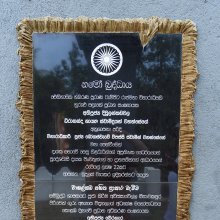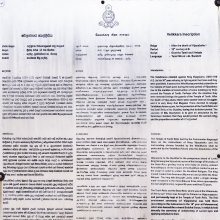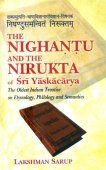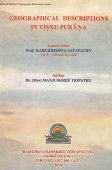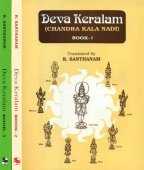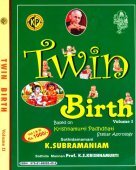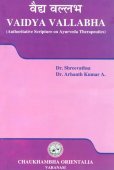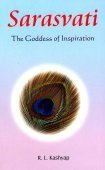Division: 1 definition
Introduction:
Division means something in Hinduism, Sanskrit. If you want to know the exact meaning, history, etymology or English translation of this term then check out the descriptions on this page. Add your comment or reference to a book if you want to contribute to this summary article.
Images (photo gallery)
In Hinduism
Yoga (school of philosophy)
Source: ORA: Amanaska (king of all yogas): A Critical Edition and Annotated Translation by Jason Birch1) Division (between substances) can be denoted by the Sanskrit term Vibhakti, according to the Niśvāsakārikā (Jñānakāṇḍa verse 12.162-63).—Accordingly: “When a Brahmin, Kṣatriya, Vaiśya or Śūdra is a knower of the highest reality, [then] no distinction exists [between them], just as no division (vibhāga) exists [between] fire placed in fire, milk in milk [or] water poured into water. [This] truth has been spoken by Śiva”.
2) The Division (of the Sakala contemplation) is denoted by the Sanskrit term Prabheda, according to verse 13.7cd-8 of the Mālinīvijayottaratantra.—Accordingly, “If one attains identification [with the water element, then], within six months steadiness is achieved. Within three years one attains gnostic vision of the water-realm. In the motionless division (nirvyāpāra-prabheda) [of the Sakala contemplation] also, one is conjoined to the reality level of water [and becomes] in all respects similar to water”.

Yoga is originally considered a branch of Hindu philosophy (astika), but both ancient and modern Yoga combine the physical, mental and spiritual. Yoga teaches various physical techniques also known as āsanas (postures), used for various purposes (eg., meditation, contemplation, relaxation).
See also (Relevant definitions)
Partial matches: Division, Te.
Query error!
Full-text (+8412): Vibhaga, Vibhakti, Anga, Bhagahara, Viccheda, Varsha, Pravibhaga, Bheda, Raurava, Jambudvipa, Bhinnabhagahara, Mandala, Prabheda, Vibhanga, Kala, Patti, Bhakti, Pariccheda, Harivarsha, Varna.
Relevant text
Search found 466 books and stories containing Division, The divisions, Divisions, Divisioonat; (plurals include: Divisions, The divisionses, Divisionses, Divisioonats). You can also click to the full overview containing English textual excerpts. Below are direct links for the most relevant articles:
Yavanajataka by Sphujidhvaja [Sanskrit/English] (by Michael D Neely)
Verse 1.26 < [Chapter 1 - The Innate Nature of the Zodiac Signs and Planets]
Verse 35.1 < [Chapter 35]
Verse 1.27 < [Chapter 1 - The Innate Nature of the Zodiac Signs and Planets]
Vakyapadiya of Bhartrihari (by K. A. Subramania Iyer)
Verse 3.1.17-18 < [Book 3 - Pada-kāṇḍa (1): Jāti-samuddeśa (On the Universal)]
Verse 3.1.16 < [Book 3 - Pada-kāṇḍa (1): Jāti-samuddeśa (On the Universal)]
Verse 3.6.5 < [Book 3 - Pada-kāṇḍa (6): Dik-samuddeśa (On Position)]
Hayanaratna: The Jewel of Annual Astrology (by Martin Gansten)
8. The Twelve Dignities (dvādaśavargī-cakra) < [Chapter 2 - Aspects and Dignities]
6. The Sixfold Strength (ṣaḍbala) < [Chapter 2 - Aspects and Dignities]
5. The Five Dignities (pañcavargī) < [Chapter 2 - Aspects and Dignities]
International Ayurvedic Medical Journal
Bilateral pre-hilar branches of the renal arteries – a cadaveric study < [2014, Issue VI Nov-Dec]
Critical analysis of vyana vata in terms of shareera kriya < [2016, Issue IV April]
Bilateral axillary arch muscle along with variation in posterior cord of brachial plexus < [2022, Issue 2, February]
Karmic Astrology—a Study (by Sunita Anant Chavan)
Part 2.2.2 - Units of time < [Chapter 2 - Jyotiḥśāstra and the Concept of Karman]
Part 1.2 - Jyotiḥśāstra in the Saṃhitā Period < [Chapter 3 - Development of Jyotiḥśāstra and Karman in the Literature]
Part 2.1.1 - Concept of Sūrya (the Sun) < [Chapter 2 - Jyotiḥśāstra and the Concept of Karman]
Trishashti Shalaka Purusha Caritra (by Helen M. Johnson)
Part 27: Description of Puṣkaradvīpa < [Chapter III - The initiation and omniscience of Ajita]
Part 4: Description of King Vimalavāhana < [Chapter I - Previous incarnation as Vimalavāhana]
Part 21: Description of the Middle World (madhyaloka) < [Chapter III - The initiation and omniscience of Ajita]
Related products
(+8 more products available)
